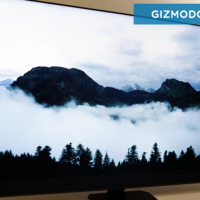PCI Express 4.0 hardware is here at long last. Solid state drives (SSDs) and graphics cards with PCIe 4.0 support debuted in June during Computex 2019. That’s all thanks to AMD.
Faster computer parts is always an exciting prospect, but for now, we’re mostly talking about noticeable increases in speed for M.2 NVMe “gum stick” SSDs. Graphics cards with PCIe 4.0 support are arriving in summer 2019, but gamers don’t need the extra bandwidth they offer just yet. The debut comes two years after the PCIe 4.0 standard was published in mid-2017.
Complicating matters is that by the time gamers are clamoring for more bandwidth, we may be talking about a different version of PCIe altogether. Just as PCIe 4.0 is coming to computers, the PCI Special Interest Group (PCI-SIG)–the body responsible for releasing new PCIe standards–published PCIe version 5.0.
What Is PCIe?

The Peripheral Component Interconnect Express (PCIe) standard is how expansion cards communicate with your PC. This includes items such as graphics cards, sound cards, Wi-Fi cards, and M.2 NVMe SSDs. The higher the PCIe version, the higher the bandwidth available to a system’s expansion cards.
PCIe expansion slots on your PC typically come in four flavors x1, x4, x8, x16. Those numbers denote how many “lanes” each expansion slot has. The more lanes a slot has the faster data can flow to and from the card. Modern graphics cards use x16 slots, for example, while M.2 “gum stick” NVMe SSDs use special slots with two or four lanes.
PCIe is also backward compatible. If you have a PCIe 4.0 graphics card you can use it with a motherboard designed for PCIe 3.0; however, the card’s available bandwidth would be limited to the capabilities of PCIe 3.0. Conversely, a PCIe 3.0 card can fit in a PCIe 4.0 slot, but again it would be limited by PCIe 3.0.
Those are the absolute basics of PCIe. For a deeper dive check out our explainer on the different PCI Express ports on your motherboard.
What’s New In PCIe 4.0?
The critical feature of any new PCIe version is that it doubles the bandwidth from the previous generation. There are all kinds of numbers being thrown around about what that means. But in practical terms a PCIe 4.0 x16 slot can theoretically hit approximately 32 gigabytes per second (GB/s) of data flowing in each direction, while PCIe 3.0 maxed out around, you guessed it, 16GB/s.
Many people will also talk about PCIe 4.0 x16 having a bandwidth of around 64 GB/s, but in that case, they are just counting the total amount of data flowing in both directions. Whichever way you count it there’s a whole lot of speed coming to PCs, and graphics cards occupying PCIe 4.0 x16 slots are on their way.













